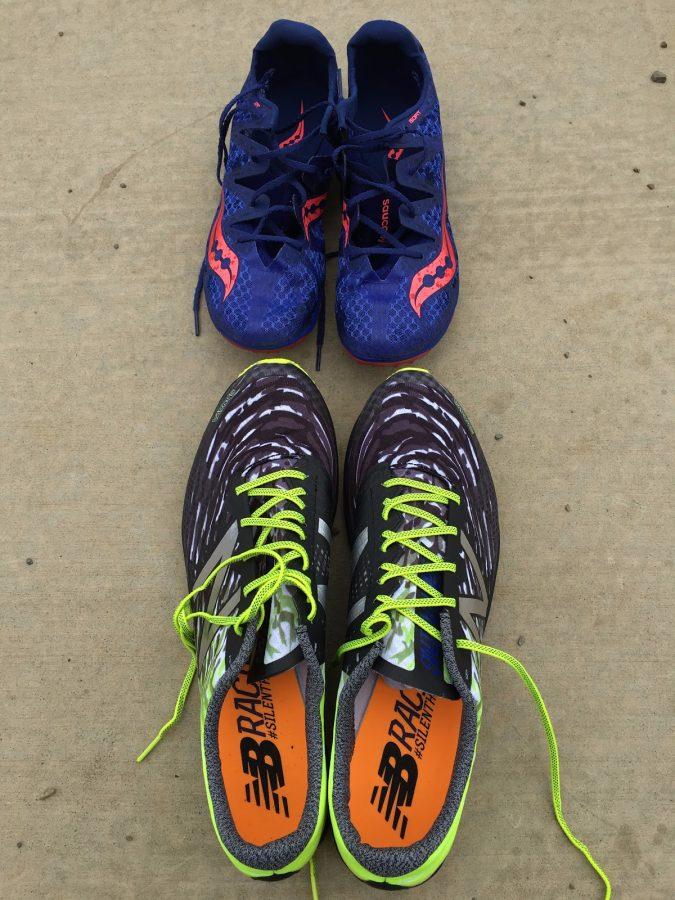Racing Flats: Yay or Nay?
There is no doubt you have seen trees losing their leaves and colder weather arrive. Along with it, you may have noticed an increase of the amount of high school runners on the roads. As fall arrives, so does the beginning of cross country. Cross country is a running sport in which contestants run on open, natural terrain for miles on end (typically no more than 12).
Some questions that have plagued cross country and other sports are: “Do proper shoes help you perform better like in the ads, or are they just for appearance? If they do, how?” For cross country, I am specifically talking about racing flats and spikes, extremely lightweight shoes with spikes or outsoles designed to grip surfaces better. I recently spoke to Jarrett Moore ‘11, a former track and cross country runner at SHC and USF and a SHC record holder in multiple events. He is also a new assistant coach for cross country here at SHC. While on a run, I asked him those questions. He explained to me that racing flats help by providing a mental edge. They are lightweight and minimalistic. Hence, they allow the runner to focus on the race itself instead of the shoe. If a runner wore heavier shoes, he or she would notice the extra weight on feet. Also, the superior outsoles of racing flats let them grip surfaces better, allowing the runner to be more confident on tough surfaces. The lightness of the shoe, combined with a minimalistic upper and special outsoles give confidence to the runner, making him feel faster and quicker.
Now having a mental edge is great and all, but what about actual stats that show flats help one faster? Can’t a person wear heavy shoes to run and still be confident? A study by Jason Franz, Corbyn Wierzbinski, and Rodger Kram at the University of Colorado answered these questions. The study found that when 100 grams of lead were added to shoes, the amount of oxygen used increased by one percent. This means that you would need to breathe harder, making running more difficult.
Flats also help runners stay on their toes and reduce ground contact time, or the time the foot spends on the ground. A study by Robert Chapman of Indiana University claimed that lower ground contact time usually indicated a faster runner. Runners who spend more time in the air than on the ground tend to be faster and more efficient.
However, flats do have drawbacks. According to Coach Jarrett, people who wear flats have a higher chance of injury due to their lack of cushioning. Before use, flats should be worn for about four hundred meters so the runner gets used to them. To combat this, one should only wear them for races or other extreme cases such as track workouts. Afterwards, one should take them off and wear normal trainers again.
My opinion on flats is that they are indeed helpful. Putting them on makes me feel fast and free not to mention I love their slim looks. Wearing them makes me more confident when racing. I found that wearing normal trainers during a race can feel somewhat sluggish due to heavier shoes weighing me down.
My verdict on flats, formed by Jarrett Moore’s statements, studies, and my personal experiences is that flats work, and work very well. Running is a mental sport along with physical. When it gets tough, can a runner get tougher?
Flats help runners be stronger mentally and be more confident and aggressive on their races. Flats assist runners physically as well, since they are lighter and have better traction. They have disadvantages, which can be countered by only wearing flats during races or during serious workouts. Flats are must-buy for any serious cross country runner. Thankfully, flats are relatively cheap (generally $60.00-$110.00). Some personal favorites are mine are Nike Rival Waffles ($60) for entry-level runners. They feature more cushioning than other flats and I love their locked-in feel. For those who want the lightest, I recommend the Carrera Xc 2 ($110) from Saucony. They have little support and cushioning, but are the lightest I have worn.










